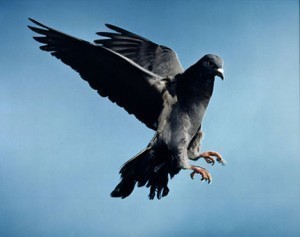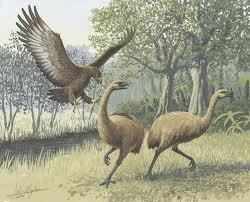Pigeon Sizes
Pigeons belong to the bird family Columbidae, which also includes doves. To some extent, doves and pigeons are sometimes mistaken for each other, but it is generally held that the former are smaller in size than the latter. As for the pigeons, they themselves come in different species that each vary in form and size.
which also includes doves. To some extent, doves and pigeons are sometimes mistaken for each other, but it is generally held that the former are smaller in size than the latter. As for the pigeons, they themselves come in different species that each vary in form and size.
The species commonly referred to as merely the “pigeon,” the Rock Pigeon originated from Europe, western Asia and northern Africa but have since been abundant in many cities all over the world. Adult rock pigeons grow to a length of 32-37 cm (12-14 ½ inches) with a wingspan of 64-72 cm (25-28 inches). They are similar in size and plumage to the Stock Pigeon which migrates between Europe and Asia.
The Trocaz Pigeon, also known as the Madeira Laurel Pigeon as this species is prevalent in the Portuguese archipelago of Madeira, grows to a size of 42-45 cm. The Laurel Pigeon of the Canary Islands in Spain is 40-43 cm long. The Wood Pigeon is, along with the Rock and Stock pigeons, one of the three West European Columba pigeons. It has some similar characteristics with those two species, as well as with the Trocaz and Laurel pigeons, but is otherwise distinguished by its much larger size of 38-43 cm.
The Speckled Pigeon breeds in most of Africa and is sized at 41 cm. The African Olive or Rameron Pigeon, which breeds in eastern and southern Africa, matures to a length 37-42 cm. The Speckled Wood Pigeon from the northeastern portions of India, Pakistan and the Himalayas has a length of 38 cm. The Sri Lanka Wood Pigeon, endemic to Sri Lanka as its name denotes, grows to a length of 36 cm.
The Pale-capped Pigeon of Eastern Ghats and northeastern India is 36-40 cm in length. The Silvery Pigeon, known for its silvery-gray plumage and is also known as the Silvery Wood Pigeon and the Grey Wood Pigeon, has a length of about 37 cm and an estimated weight of 350 grams. They were once thought to be extinct until they were photographed at Masokut Island in 2008. Not so lucky was the Bonin Wood Pigeon once found in Nakodo-jima and Chichi-jima in the Ogasawara Islands off the Japanese coast. Dying out in the late 19th century due to hunting and deforestation, they had an average size of 45 cm in length.
Believed to be the largest-sized member of the Columba species, the Japanese Wood Pigeon (found in Japan, China, South Korea, Taiwan and Russia) has a length of 43 cm (17 inches) and weighs in at 550 grams (1.2 lbs). Found among the Pacific islands, the Metallic Pigeon, also known as the White-throated Pigeon, is medium-sized at 37 cm. The White-headed Pigeon from Australia’s east coast varies in size from 38-41 cm (15.2-16.4 inches).
The different types of pigeons that come in varying colors and sizes would also serve to indicate how large the bird family Columbidae has grown. But as commonplace and abundant as pigeons may appear to be, some species have eventually gone extinct and even others are at the moment imperiled, so they need as much care and attention as we would give all other endangered species.





